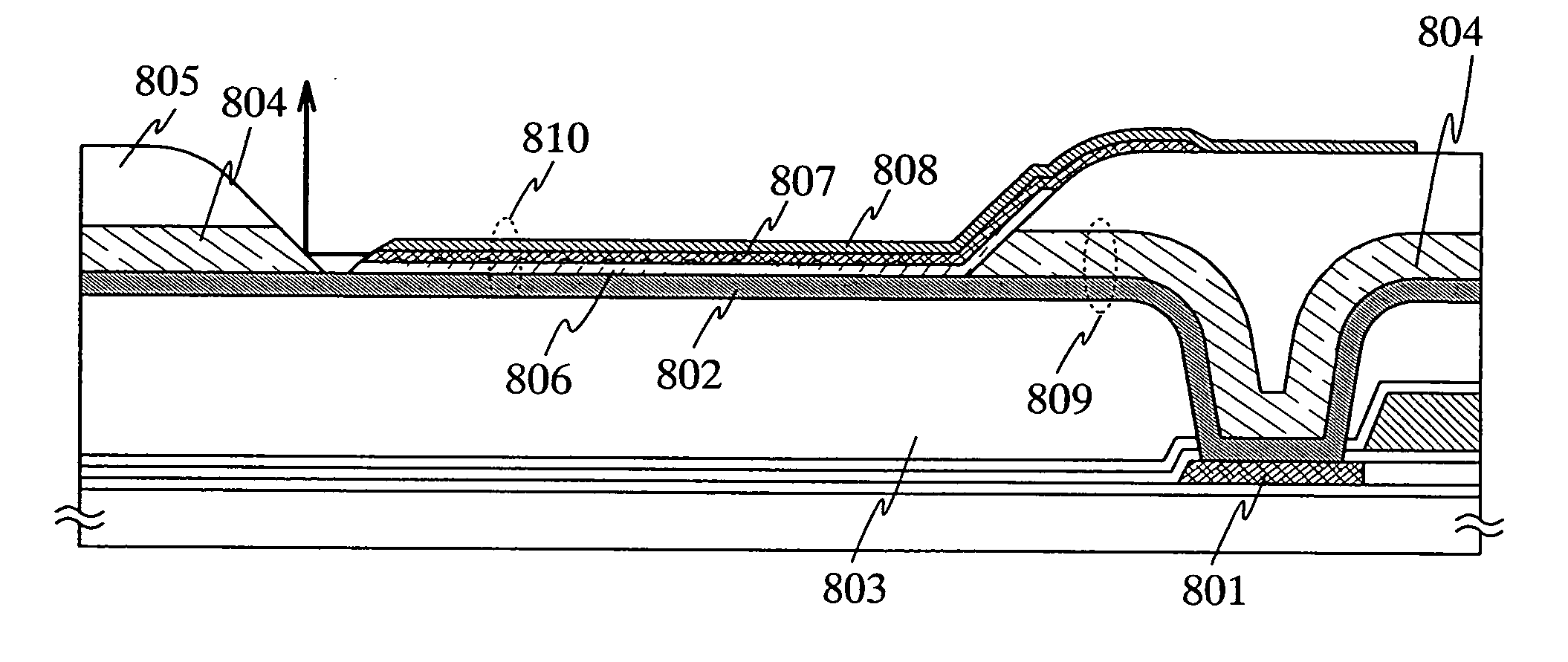Semiconductor device
a semiconductor and semiconductor technology, applied in the direction of organic semiconductor devices, solid-state devices, semiconductor devices, etc., can solve the problems of poor directional characteristics, poor color purity, and inability to use light as laser light, and achieve low cost, high performance, and high speed
- Summary
- Abstract
- Description
- Claims
- Application Information
AI Technical Summary
Benefits of technology
Problems solved by technology
Method used
Image
Examples
example 1
[0122] In Example 1, an example in which CPU core of a CPU (Central Processing Unit) represented by a microprocessor is formed over a plurality of glass substrates to connect the substrates with each other by optical interconnection will be explained.
[0123] A TFT formed over a glass substrate operates at slower than a single crystal transistor. Accordingly, in the case that a CPU is formed over a glass substrate, it is difficult to execute processing at sufficient speed by a single CPU core when the processing is complicated. Consequently, series of processing of a CPU core are divided into some pieces of processing on a subjective basis, and one CPU core formed over a substrate is allocated to each processing. By connecting a plurality of substrates provided with each CPU core by optical interconnection, series of processing can be executed similar to the case of using single CPU core. CPU core formed over each substrate may execute only allocated processing; the processing speed ...
example 2
[0136]FIG. 7 shows the device configuration of a sample manufactured according to Example 2. An ITO film is deposited by sputtering to have a thickness of 100 nm as an anode 301 over a support medium over which an electrode, a light-emitting layer, and the like are formed.
[0137]α-NPD is deposited thereover by vacuum vapor-deposition to have a thickness of 135 nm as a hole transporting layer 302. Then, diffraction gratings 307 are formed over the hole transporting layer 302, and then, a light-emitting layer 303 is formed to have a thickness of 30 nm by co-evaporation of 4,4′-bis(N-carbazolyl)-biphenyl (hereinafter, CBP) as a host material and an iridium complex, Ir(tpy)2(acac), which is a triplet light-emitting material. The weight ratio of the CBP and the iridium complex is 10:1. BCP, calcium fluoride (CaF2), and aluminum (Al) are deposited sequentially over these films as an electron transporting layer 304, an electron injecting layer 305, and a cathode 306, respectively. Therefor...
example 3
[0155] An example of a semiconductor display device, which is one of the semiconductor device according to the present invention, will be explained in Embodiment 3.
[0156]FIG. 12 is a block diagram for showing the structure of a semiconductor display device according to Example 3. The semiconductor display device shown in FIG. 12 has two glass substrates. An external input terminal 225, a VRAM (Video Random Access Memory) 201, a timing signal generation circuit 202, a video signal processing circuit 203, a light output unit for control signal 204, and a light output unit for video signal 205 are provided to a first substrate 200.
[0157] One or a plurality of light-emitting elements 220 and light-emitting element drive units 221 corresponding respectively to the foregoing light-emitting element are provided to each of the light output unit for control signal 204 and the light output unit for video signal 205. Further, one light-emitting element drive unit 221 may correspond to either...
PUM
 Login to View More
Login to View More Abstract
Description
Claims
Application Information
 Login to View More
Login to View More - R&D
- Intellectual Property
- Life Sciences
- Materials
- Tech Scout
- Unparalleled Data Quality
- Higher Quality Content
- 60% Fewer Hallucinations
Browse by: Latest US Patents, China's latest patents, Technical Efficacy Thesaurus, Application Domain, Technology Topic, Popular Technical Reports.
© 2025 PatSnap. All rights reserved.Legal|Privacy policy|Modern Slavery Act Transparency Statement|Sitemap|About US| Contact US: help@patsnap.com



